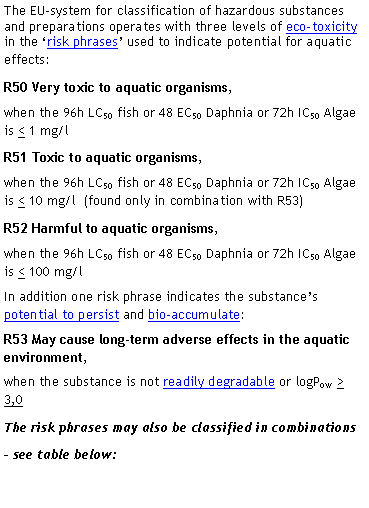
|
Introduction |
|
Why be concerned? |
|
Supplier progress |
|
Potential impacts |
|
Functional groups |
|
Substance list |
|
Legislation / REACH |
|
FAQs |
|
Related Links |
|
Wash with care |



|
Environmental assessment of laundry detergents |
|
Classification of aquatic environmental within the EU system for classification of hazardous substances |

|
Hazard symbol According to the EU Directive the hazard symbol N must be used for al combinations except R52, R53 and R52/63. |

|
Acute toxicity * LC50 / IC50 / EC50 |
Readily degradability |
Potential to bio-accumulate |
|
Hazard symbol; R-phrase |
|
< 1 mg/l |
and Yes |
and No |
Ž |
N; R50 |
|
< 1 mg/l |
and No |
and/or Yes |
Ž |
N; R50/53 |
|
>1 and < 10 mg/l |
and No |
and/or Yes |
Ž |
N; R51/53 |
|
>10 and < 100 mg/l |
and No |
and Yes/No |
Ž |
R52/53 |
|
* = The lowest concentration that affects 50% of the fish, Daphnia or algae population n the test sample. |
||||